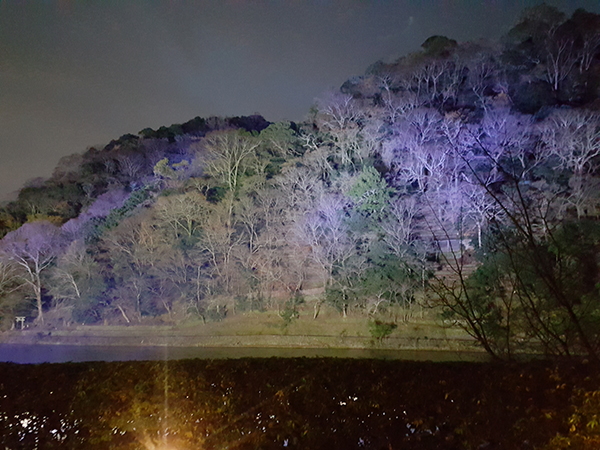
The nightscape of Arashiyama Dec 13 2019 Sunshine Lee's Culture Essay Hanaikada There is another place that I make it a rule to visit whenever I visit Arashiyama.
It’s Hanaikada Ryokan. ‘Ikada,’ meaning raft in Japanese which I gather is either an archaic or sophisticated word, because the Japanese who hear the word smile and say “Ah--.” Japan, with a lot of volcanoes, has many onsens (hot springs). Ryokan, Japanese style inns, have onsen exclusively used by ryokan guests. Though uncommon, there are ryokans who accept outside customers in their onsen, and these places are called Higaeri, roughly translated as ‘not staying but using onsen once.’
We think that hotels are classy and expensive while inns are cheaper and humbler choices. If someone asks to “please get me a suitable inn,” it usually means “please get me an affordable place.” But in Japan, ryokan, or inn, has classier image with more expensive charges than hotels. In traditional Japanese tatami rooms, a staff in Kimono prepares and makes the bed every morning and evening. And above all, they treat each guest with utmost hospitality. They also provide breakfast and dinner. That is why only the ryokan guests can enjoy the small scale onsen inside. It’s difficult for outside customers to enjoy onsen in ryokan. At the end of the famous Togetsukyo Bridge in the center of Arashiyama is a cluster of ryokans. At the entrance of those ryokans is located Hanaikada. When I was studying at Doshisha University, I didn’t have enough time. The only break I enjoyed was going to Kurama onsen in the opposite direction by train on the weekends, carrying study materials. I couldn’t go to Arashiyama as it was quite far from my room which was located next to the university and required several transfers.
But one day, I finally went there and inquired each Ryokan in Arashiyama if they offered Higaeri. And I found a place that offered it: Hanaikada.
I pay 860 yen and go upstairs to the third floor to find an onsen. It’s a small one and one person completely fills the space. Though I somewhat feel like I’m sitting in a coffin, the temperature of the water is right and comfortable and the water makes me feel good. I come out of the water and open the inner gate to find a half-covered outdoor onsen of the same size. A light breeze is blowing from somewhere which also makes people feel good. I throw on some clothes and go upstairs to the rooftop on the fourth floor. There is a small outdoor onsen under the sky which is open to Higaeri users as well. This feels like a private place just for me, so I visit this place a lot whenever I am in Arashiyama, yet as they only accept outside customers until 4 in the afternoon, it’s easy to miss the opening hour if I spend too much time looking around other places.
If that happens, there is a public onsen called Fufu which is open till late, and which is a few minutes walking distance from Hanaikada. Though it doesn’t have the private air of warm embrace, Fufu is worth visiting as it is spacious and has modern taste.
This tiny space of onsen reminds me of The Compact Culture by Lee O-young which was published in Japan a long time ago. The book accentuated Japanese characteristics of making things delicately small and making use of tiny spaces in an admirably elaborate and detailed way with a unique perspective, which caused a sensation in Japan for a while.
If we look closely, there are quite a few things that are big on a global scale in Japan as well, though. Large stadiums, tall buildings, world-class temples, the biggest temple in the world and the biggest temple gate in the world – there are a lot of huge things in Japan, if you think about it. Yet I guess Japan stands out as it finds unique beauty in delicate and small things and makes them detailed, while a lot of countries in the rest of the world just contrive for making big and tall things.
Kyoto isn’t exactly famous for its onsen, but it does have many tourist attractions. Therefore, tourists staying in Kyoto for a few days might not visit onsen. I myself asked around for onsen in Kyoto after staying in Kyoto for over six months.
And then I found a pleasant ryokan onsen which offered Higaeri in Arashiyama that way.
There is a hotel that charges 300,000 yen (roughly $3,000) for a night, and Hanaikada Ryokan charges more than 30,000 yen for a night- it would be good if you stayed in the ryokan, but even if you don’t, you can enjoy onsen at 860 yen.
You should enjoy the humble beauty. It’s small but satisfying happiness.
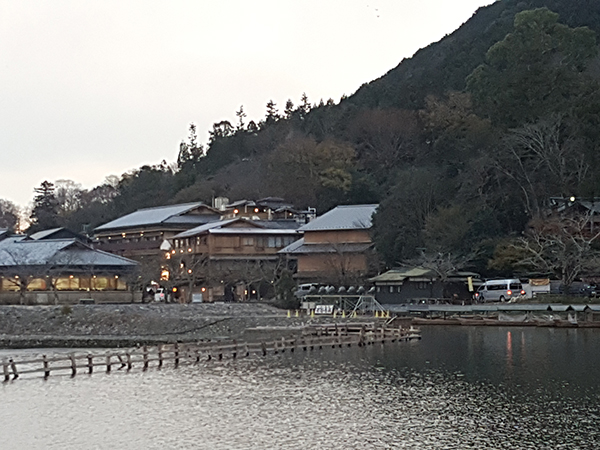
Onsen town at the riverside of Katsura River in front of Arashiyama Mountain 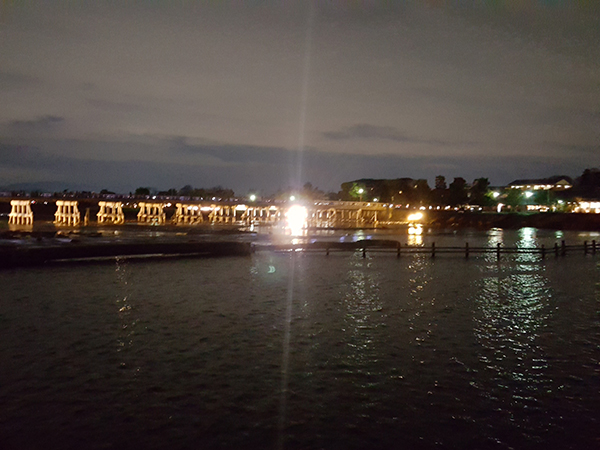
The nightscape of Katsura River, flowing under Togetsukyo Bridge of Arashiyama 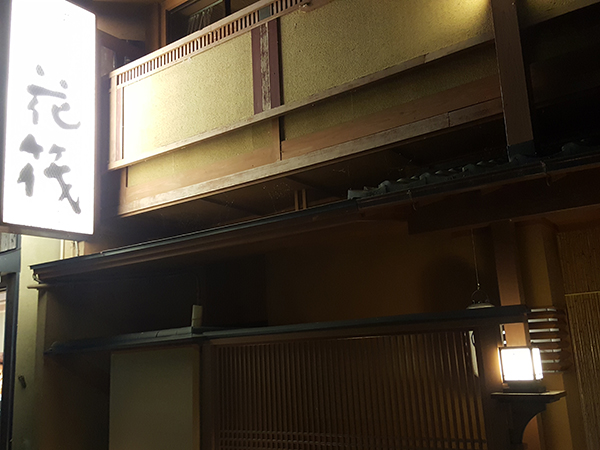
Hanaikada ryokan - Arashiyama, Kyoto Dec 14 2018 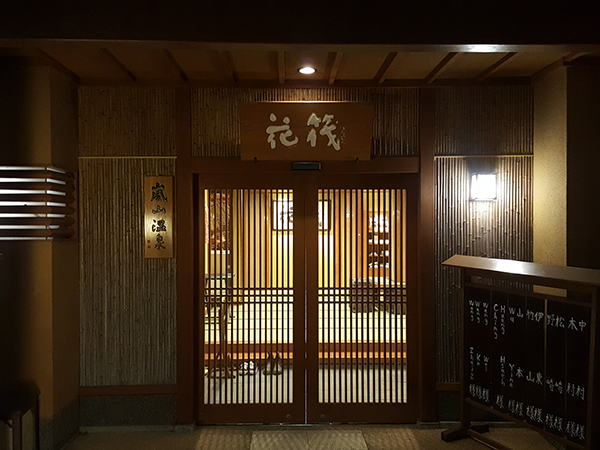
The entrance of Hanaikada ryokan - Arashiyama, Dec 14 2018 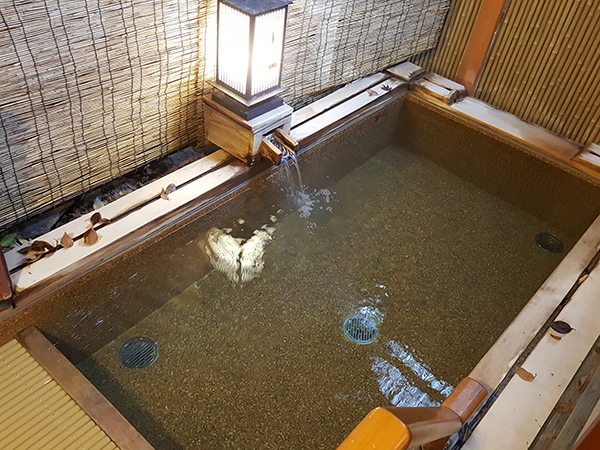
Onsen for one in Hanaikada ryokan 

‘Togetsukyo Bridge’ the name engraved on the wood on the bridge, Arashiyama 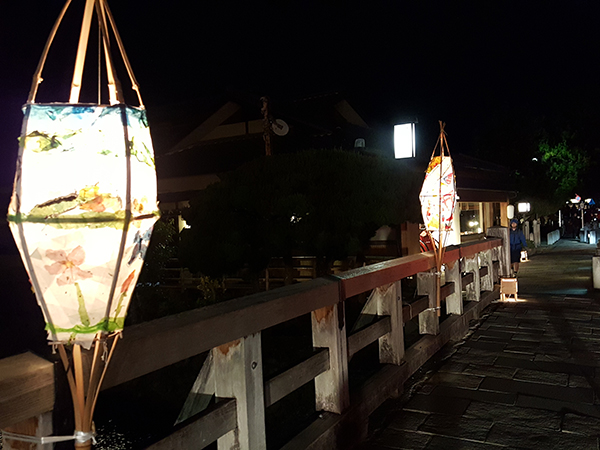
Night lights of Togetsukyo Bridge - Arashiyama Dec 2018 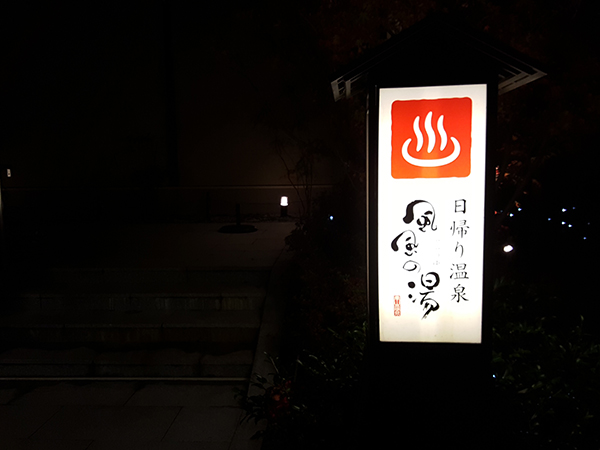
The entrance of the public onsen Fufu nearby - Arashiyama Dec 2018 |

